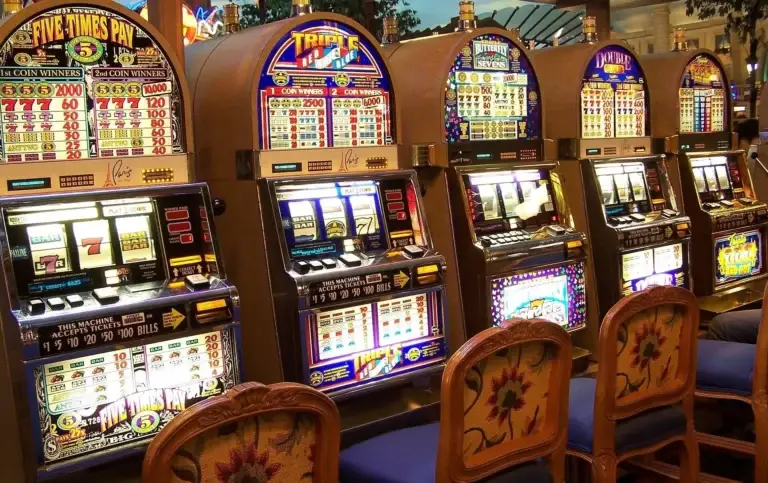The history of casinos in the USSR is not about bright signs and freedom of bets, but about strict control, party line, and paradoxes of the era. Gambling entertainment combined genuine interest in risk among people and the official struggle of the state against “bourgeois remnants.”
History of Casinos in the USSR: 1920s and the First Bans
The history of gambling establishments began with the categorical rejection by the new authorities of any form of gambling business. Already in the 1920s, party documents fixed the slogan “casinos – a symbol of capitalism.” The first casinos in the USSR were closing one after another, and by the end of the decade, the gambling business was under a direct ban.
The legislation of that period interpreted gambling as undermining morality and discipline. Roulette, card games, and poker became a sign of “non-Soviet” culture. But the desire to win money did not disappear. Underground “katrans” operated in Moscow and Leningrad, creating a parallel economy of risk.
Official Alternative: Lotteries and “Sportloto”
When the ban on gambling in the USSR became the norm, the state offered an alternative – lotteries. In the 1930s, mass draws appeared, timed to holidays and construction campaigns. People bought tickets not only for the sake of winning but also “in the name of the socialist future.”
Special attention was paid to “Sportloto,” launched in 1970. This system allowed betting on sports results, with part of the funds going towards the development of physical education. “Sportloto” became a cult: in the 1980s, tickets were sold on every corner, circulation reached millions of copies, and winning combinations were discussed in lines and kitchens.
Informal Practices: Katrans and Card Sharps
The history of casinos in the USSR is impossible without mentioning underground clubs. From the mid-1960s, katrans – illegal establishments where dealers worked, roulette spun, and poker was played – came to life in major cities. Money changed hands quickly in such places: some won a month’s salary in one evening, while others lost everything.
Being a card sharp in underground games became a real profession. In Moscow and Sochi katrans, “specialists” worked, mastering the technique of marking cards and psychological pressure. The state periodically conducted raids, but the underground gambling business grew, fueled by interest in risk and the lack of a legal alternative.
1980s: Showcase of the Olympics and Reality
The history of casinos in the USSR in the 1980s intensified. On the one hand, the 1980 Olympics demanded an “exemplary” image of the capital, so Moscow showcased only “Sportloto” and state lotteries. On the other hand, it was during this period that illegal games in Sochi reached their peak. The resort became an arena for bets, card games gathered officials, artists, and shadowy dealers.
At the same time, legislation continued to enforce a strict ban. Any gambling entertainment in the USSR, except lotteries, was considered a violation. But reality contradicted the letter of the law: people sought risk, and katrans met the demand.
What Replaced Legal Casinos
Official gambling business in the USSR was minimal. Legalizing gambling was not even discussed. However, there were phenomena that partially replaced these establishments:
- state lotteries, including “Sportloto” and “Russian Lotto” of the late 1980s;
- card games in kitchens and dormitories – from preference to “blackjack”;
- trips to Sochi, where underground clubs formed a whole subculture;
- bartering household valuables for money, turning gambling into a “deficit economy.”
This list illustrates that the history of casinos is not so much about the walls of official halls as it is about a paradox: prohibition fueled interest.
History of Casinos in the USSR: Soviet Paradox and Gambling Shadow
The history of gambling houses in the Soviet period shows a remarkable contradiction. On the one hand, the law categorically rejected the legalization of games. On the other hand, mass lotteries and “Sportloto” effectively served as legal gambling. People spent money on tickets, placed bets, and waited for a win.
Underground katrans and card sharps formed a shadow industry. Players sought roulette and poker, despite the risk of attracting police attention. The Soviet gambling business balanced between strict prohibition and hidden practice, turning gambling into a social phenomenon.
Moscow and Sochi: Two Centers of the Underground
The history of casinos in the USSR vividly manifested in two cities – Moscow and Sochi. The capital concentrated katrans for officials and the creative elite. Card games with high stakes were held in restaurant basements on Arbat and in closed apartments. Dealers in such clubs skillfully managed the process, creating an illusion of fairness, but sharp practices remained the norm.
Sochi formed a different model. The resort atmosphere and the flow of vacationers made the city an ideal place for underground business. In the 1970s-1980s, Sochi was called the “summer capital of katrans.” Roulette spun in sanatoriums, and poker attracted a diverse audience: athletes, artists, engineers. Here, a whole network of resellers was formed, turning gambling into a source of shadow income.
Money, Risk, and Law
The history of casinos in the USSR is invariably linked to money. Winnings varied from a few rubles to annual salaries. Underground bets became part of the shadow economy, competing with the official financial system.
The Soviet law imposed a strict ban on any gambling. The stronger the ban, the higher the interest in underground clubs. There was an informal system of “understandings”: katran owners paid for protection, and the police turned a blind eye until the next demonstrative campaign.
Perestroika and the First Cracks
By the end of the 1980s, the history of gambling establishments took a new turn. The ideology weakened, the economy demanded additional sources of income. Talks began about the possible legalization of the gambling business. Card games and roulette gradually emerged from the shadows, especially in tourist zones.
The first modern-style casinos in the USSR began to take shape at the end of the decade. Moscow and Sochi once again became experimental platforms. Gaming tables were installed in separate restaurants, dealers worked openly, and bets were no longer hidden. And although there was a formal ban in place, the reality showed that the state had lost full control.
History of Casinos in the USSR: Conclusions
The history of casinos in the USSR illustrates the duality of the system. On the one hand, the state imposed a strict ban on gambling entertainment, shaping legislation that excluded any mention of legalization. On the other hand, millions of people participated in lotteries, bought “Sportloto” tickets, placed bets, and sought katrans. The history of casinos is a lesson that interest in risk and money will always find a way, despite prohibitions and strict legislation.



